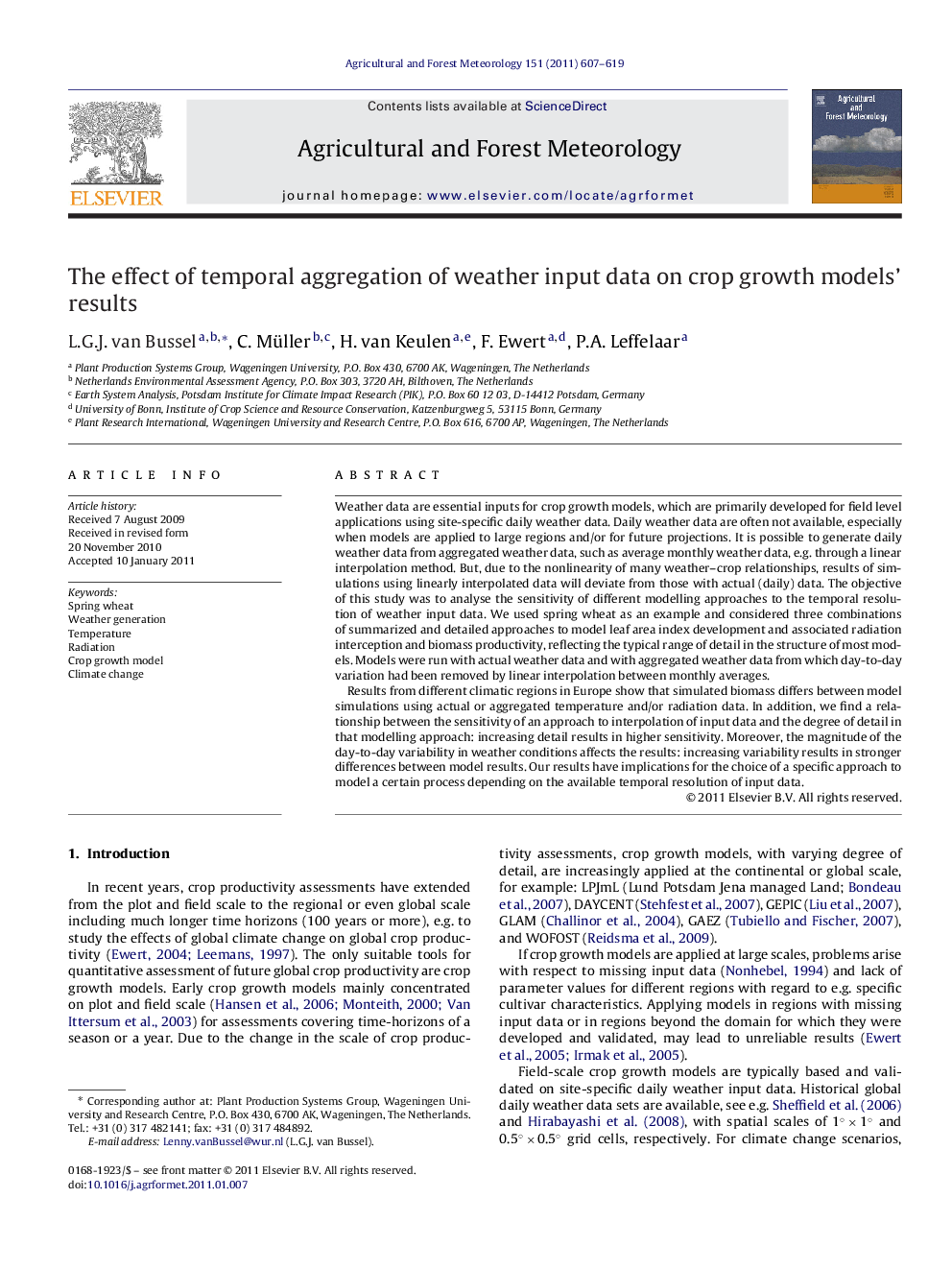| کد مقاله | کد نشریه | سال انتشار | مقاله انگلیسی | نسخه تمام متن |
|---|---|---|---|---|
| 82286 | 158387 | 2011 | 13 صفحه PDF | دانلود رایگان |

Weather data are essential inputs for crop growth models, which are primarily developed for field level applications using site-specific daily weather data. Daily weather data are often not available, especially when models are applied to large regions and/or for future projections. It is possible to generate daily weather data from aggregated weather data, such as average monthly weather data, e.g. through a linear interpolation method. But, due to the nonlinearity of many weather–crop relationships, results of simulations using linearly interpolated data will deviate from those with actual (daily) data. The objective of this study was to analyse the sensitivity of different modelling approaches to the temporal resolution of weather input data. We used spring wheat as an example and considered three combinations of summarized and detailed approaches to model leaf area index development and associated radiation interception and biomass productivity, reflecting the typical range of detail in the structure of most models. Models were run with actual weather data and with aggregated weather data from which day-to-day variation had been removed by linear interpolation between monthly averages.Results from different climatic regions in Europe show that simulated biomass differs between model simulations using actual or aggregated temperature and/or radiation data. In addition, we find a relationship between the sensitivity of an approach to interpolation of input data and the degree of detail in that modelling approach: increasing detail results in higher sensitivity. Moreover, the magnitude of the day-to-day variability in weather conditions affects the results: increasing variability results in stronger differences between model results. Our results have implications for the choice of a specific approach to model a certain process depending on the available temporal resolution of input data.
Research highlights
► Linear interpolation can generate daily weather data from aggregated weather data.
► Simulations using interpolated data will deviate from those with actual data.
► Increasing day-to-day variability in weather conditions gives stronger deviations.
► Increasing detail in a model structure results in stronger deviations.
Journal: Agricultural and Forest Meteorology - Volume 151, Issue 5, 15 May 2011, Pages 607–619